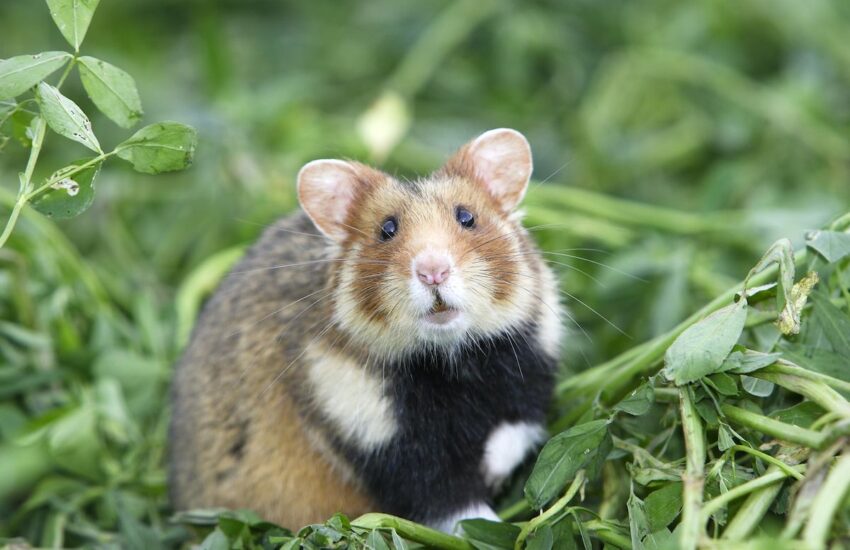Hamster Breed Overview
Understanding Hamster Breeds
Hamsters are popular pets known for their small size, gentle nature, and adorable antics. Understanding different **hamster breeds** is crucial for potential owners to make informed choices. Each breed varies in temperament, size, and care needs, making it important to match a hamster’s characteristics with your lifestyle. This overview will cover the most common breeds, their specific traits, and some tips for choosing the right one for you.

Common Types of Hamsters
The most common **hamster breeds** include the Golden (Syrian) hamster, Campbell’s dwarf hamster, Roborovski hamster, and Chinese hamster. The **Golden hamster**, also known as the Syrian hamster, is the largest of these breeds, commonly weighing around 150–200 grams. Their playful and friendly nature makes them a favorite among pet owners. On the other hand, dwarf breeds like Campbell’s and Roborovski hamsters are smaller and can weigh as little as 30–70 grams. They tend to be more active and curious, appealing to those who enjoy watching lively pet behavior.
Choosing the Right Hamster for You
When selecting a hamster breed, consider your lifestyle and how much time you can dedicate to your pet. If you have young children, the **Golden hamster** might be preferable due to its larger size and calmer demeanor. Conversely, if you live in a smaller space and seek a more energetic pet, consider a **dwarf hamster**. It’s essential to research and understand the different **hamster breeds** for a successful match that leads to a satisfying pet-owner relationship.
Hamster Care Tips by Breed
Each hamster breed has unique care requirements that owners must adhere to, including habitat, diet, and social needs. Proper care nurtures your hamster’s health and longevity. Here we focus on care tips for common hamster breeds to ensure they thrive in your home.
Syrian Hamster Care
Syrian hamsters need spacious cages with plenty of enrichment to keep them entertained. They thrive alone, as they are territorial; thus, a single-hamster habitat is best. Provide a diet rich in high-quality **hamster pellets**, along with fresh vegetables and occasional treats. Regular cleaning of their habitat and fresh bedding are also vital for maintaining a healthy environment.
Dwarf Hamster Care
Dwarf hamsters are generally social and can sometimes be kept in pairs or small groups if introduced correctly. They require a smaller cage compared to Syrians, again with ample hiding spots and enrichment objects to explore. A balanced diet consisting of pellets, seeds, grains, and the occasional fruit is ideal. Be mindful of their small size during handling to ensure they are comfortable and safe.
Fun Facts About Hamster Breeds
Hamsters may be small, but they have a lot of interesting characteristics and symptoms to explore! Here are some fun facts that highlight what makes these cute creatures so fascinating.
Unique Traits of Golden Hamsters
Golden hamsters, being the most common breed, have fascinating traits. They can store food in their cheek pouches and are known for their exploration behaviors. Their playful antics can be quite amusing! Additionally, Golden hamsters can live up to 3-4 years, making them a long-term companion pet.
Roborovski Hamsters: The Speedsters
Roborovski hamsters are the smallest of the common breeds and are known for their speed and agility. They can be extremely difficult to catch due to their quick movements, adding a level of challenge for owners. They are generally hardy and can live up to 4 years, making them ideal for those looking for a lively pet that brings dynamism to home life.
Key Takeaways on Hamster Breeds
When choosing a hamster, consider their breed and the associated care needs:
- The **Golden hamster** is larger, friendly, and best kept alone.
- Dwarf hamsters are smaller, active, and can sometimes be social.
- All hamster breeds require an adequate habitat, diet, and care for optimal health.
FAQ
1. How long do different hamster breeds live?
The lifespan of hamsters varies by breed. On average, **Golden hamsters** live for about 3–4 years, while **dwarf hamsters** can live for around 2–3 years. However, proper care can sometimes extend these lifespans significantly, especially in a loving home environment.
2. Do all hamster breeds require the same type of diet?
While many **hamster breeds** benefit from high-quality commercial pellets designed specifically for them, the proportions and specific snacks might differ. Golden hamsters may require more protein in their diet, while dwarf species might require a gentler approach due to their size.
3. Are hamsters social animals?
<pThis depends greatly on the breed. **Syrian hamsters** tend to be solitary and should be housed alone, while some **dwarf hamster breeds** can thrive in groups if they are properly socialized from a young age. Always research the specific breed traits to ensure safe companionship when housing them together.
4. How should I clean my hamster’s habitat?
Cleaning your hamster’s habitat involves removing soiled bedding and uneaten food regularly. A thorough clean is recommended once a week using mild soap and water to avoid harmful chemicals that may affect their health. Ensure that fresh bedding and a comfortable environment are maintained.
5. What is the best habitat setup for a hamster?
A suitable hamster habitat should include a spacious cage, clean bedding, various toys for enrichment, and a hiding spot to ensure they feel safe. Additionally, offer a wheel for exercise, climbing areas, and chew toys to maintain dental health. Tailor the setup to the specific breed’s needs.
By choosing the right breed and offering appropriate care, you can enjoy the delightful companionship that hamsters provide, enrich your life with their playful antics, and embark on a fulfilling journey as a hamster owner.
